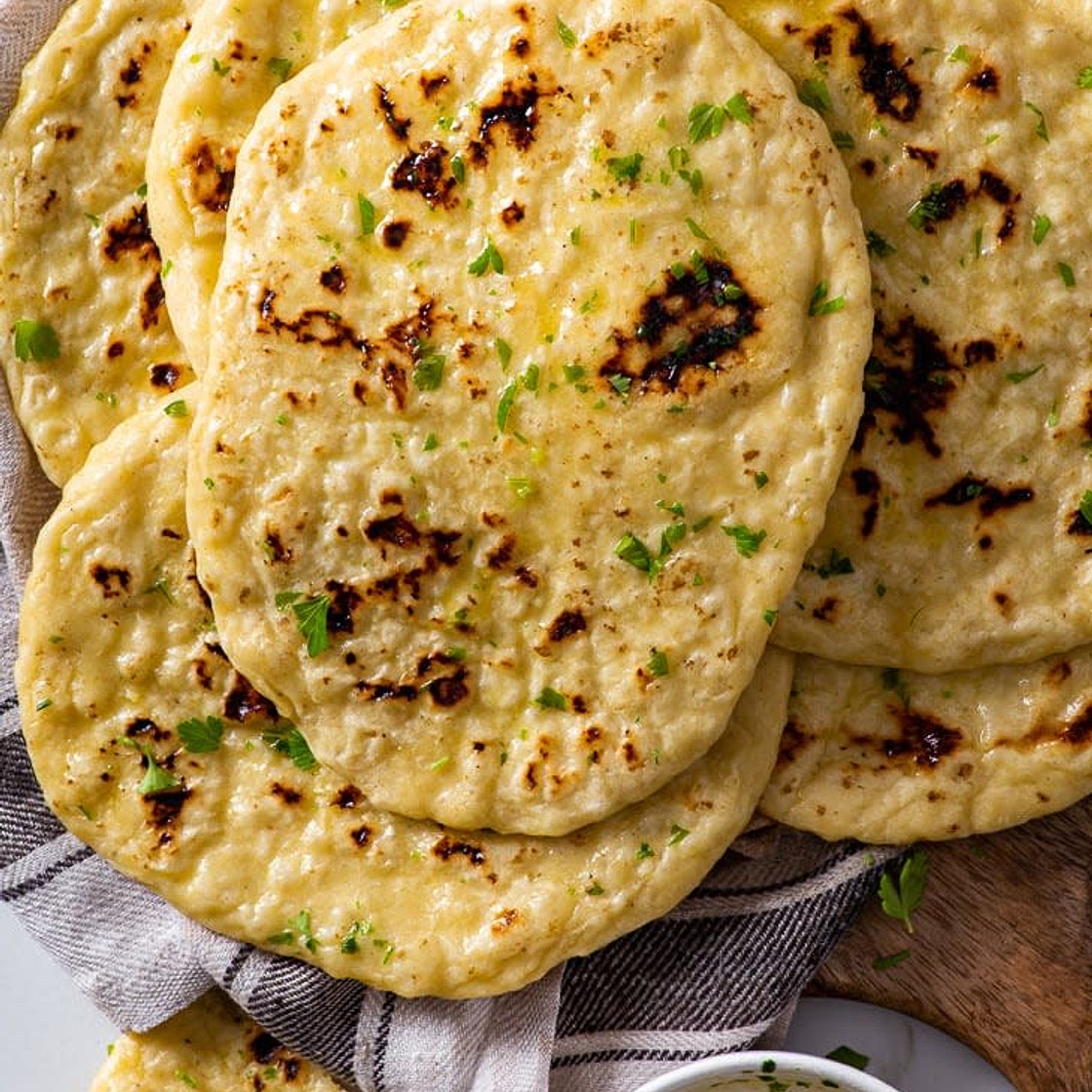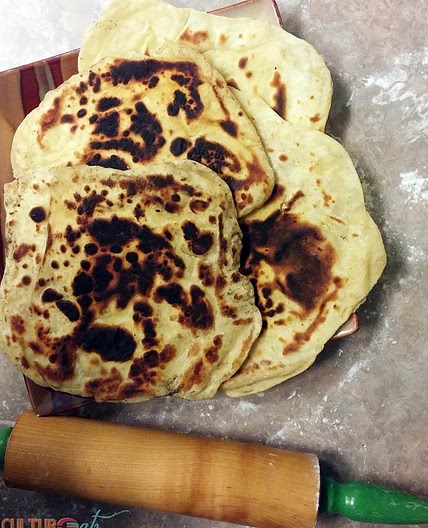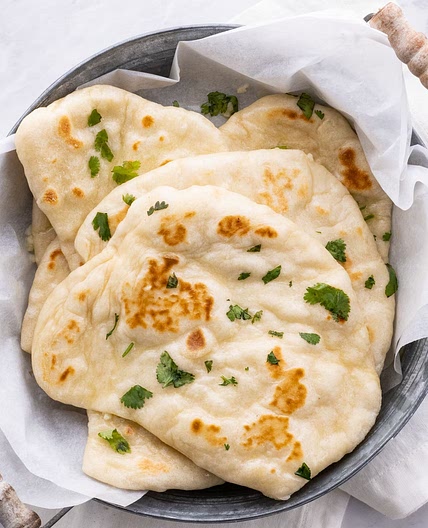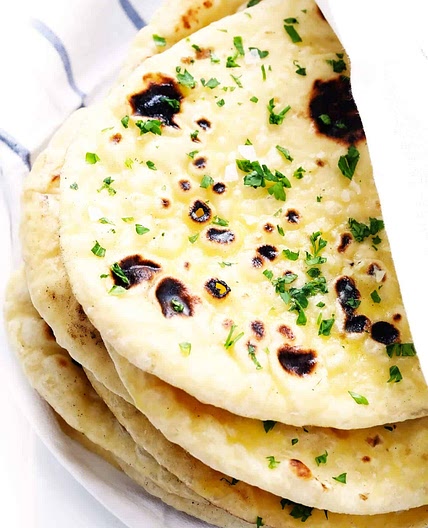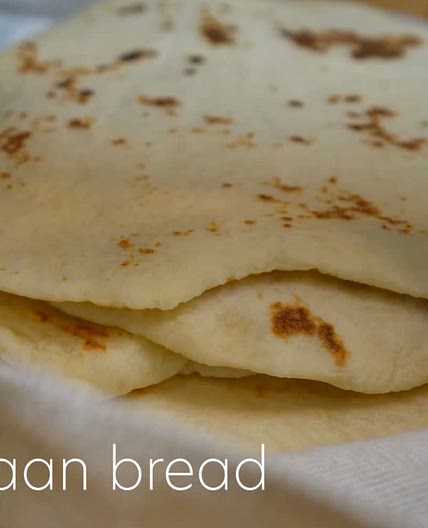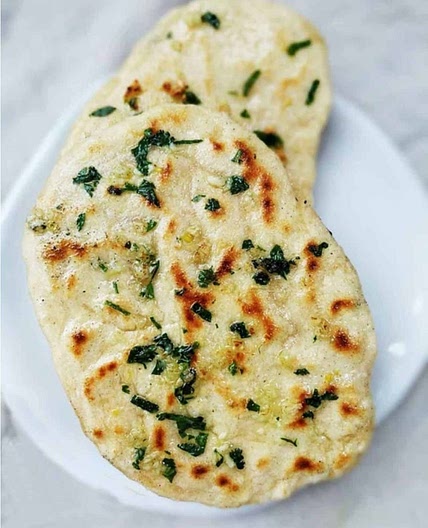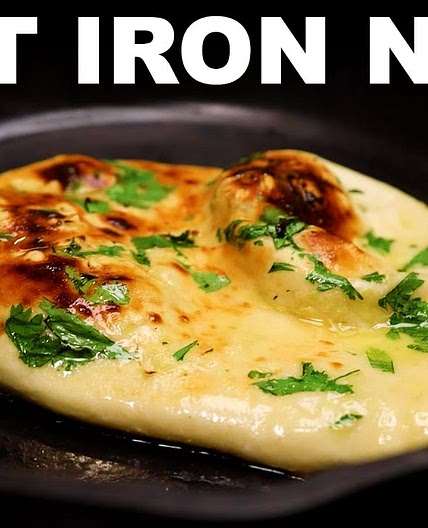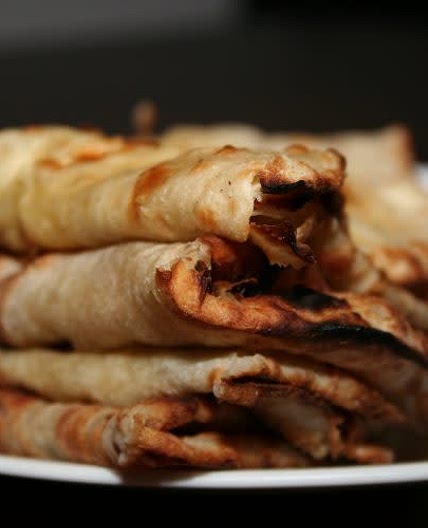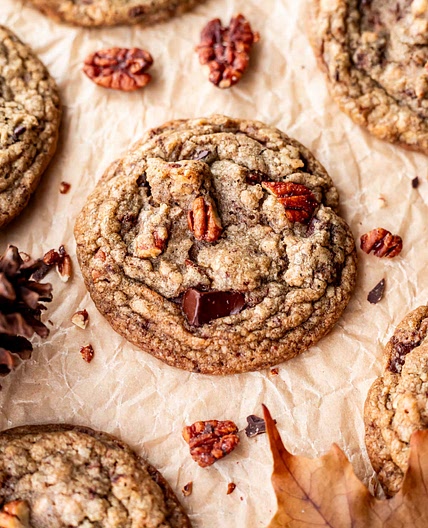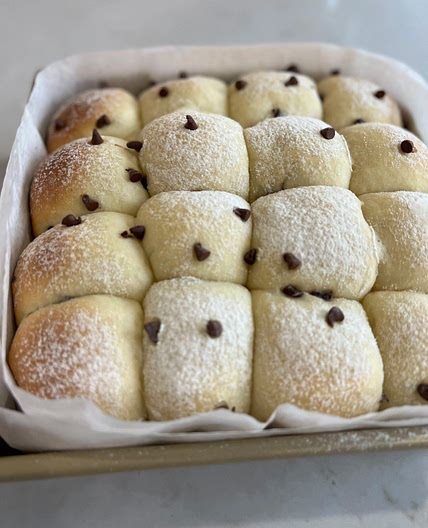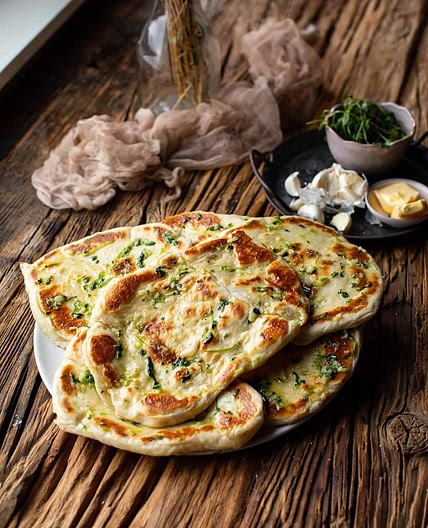By Lindsay H
Quick & Easy Gluten Free Naan Bread (No Yeast)
32 steps
Prep:25minCook:20min
This is THE BEST gluten free naan you’ll ever taste. It’s incredibly soft and pillowy, with just the right amount of chewiness – and it puffs up beautifully! It’s also really easy to make: the dough is a joy to work with (you can knead it and roll it out without any problems whatsoever) and because this recipe uses baking powder instead of yeast, it's ready in about 45 minutes.
Updated at: Thu, 17 Aug 2023 05:37:39 GMT
Nutrition balance score
Unbalanced
Glycemic Index
71
High
Glycemic Load
29
High
Nutrition per serving
Calories264.2 kcal (13%)
Total Fat10.3 g (15%)
Carbs40.7 g (16%)
Sugars2.5 g (3%)
Protein3.6 g (7%)
Sodium389.5 mg (19%)
Fiber3 g (11%)
% Daily Values based on a 2,000 calorie diet
Ingredients
8 servings
20gpsyllium husk
whole, rough husk form, If using psyllium husk powder, use only 17g
360gwater
warm
235gmillet flour
plus extra for flouring the surface, You can use an equal weight of finely ground/milled brown rice flour instead, but your naan might be slightly less fluffy and puffy, For
130gtapioca starch
You can use an equal weight of cornstarch, US, potato starch or arrowroot starch instead
1 Tbspcaster sugar
superfine or granulated
1 ½ tspbaking powder
1 tspsalt
75gplain yoghurt
unsweetened, or Greek-style, room temperature
25golive oil
You can use other oils instead, such as sunflower or vegetable oil
45gghee
or butter, melted
parsley
or cilantro, finely chopped
Instructions
Making the naan dough:
Step 1

You can make the dough by hand or using a stand mixer fitted with the dough hook attachment.
Step 2
Make the psyllium gel: In a bowl, mix together the psyllium husk and warm water. After about 30-45 seconds, a gel will form.
Step 3
In a separate large bowl (or the bowl of a stand mixer, if using), whisk together the millet flour, tapioca starch, sugar, baking powder and salt.
Step 4
Add the yoghurt and olive oil to the psyllium gel, mix well, and then add them to the dry ingredients.
Step 5
Mix with a wooden spoon or a rubber spatula until the dough starts coming together. Then, give it a thorough knead by hand. Squeeze the dough through your fingers and work your way around the bowl, scraping off the sides as necessary. Make sure that there are not patches or clumps of dry flour.
Step 6
The final dough should come away from the sides of the bowl and be very springy and supple to the touch. It shouldn’t be too sticky. Don’t worry if doesn’t have a perfectly smooth surface – so long as it’s homogeneous with all the ingredients well combined and no clumps of flour or psyllium gel, you can proceed to the next step.
Dividing & pre-shaping the dough:
Step 7

Turn out the dough onto a lightly floured surface and shape it into a ball.
Step 8
Divide it into 8 equal portions. You can use a scale to make sure that they’re all of equal weight (each portion should weigh about 110g) or you can just eyeball it.
Step 9
Shape the pieces of dough into balls. Don’t worry if the surfaces of the dough balls aren’t perfectly smooth – that’s due to the lack of gluten and it won’t matter in the end, as you’ll be rolling them out anyway. As you move onto the next step (rolling out the naan breads) keep the pieces of dough covered with a dish towel to prevent them from drying out.
Rolling out the naan breads:
Step 10
Place a dough ball onto a lightly floured surface and dust its top with more flour.
Step 11

Use a rolling pin to roll it out into a round or oval naan.The final rolled-out naan should measure about 7-8 inches (18-20cm) in diameter, with a thickness of about ⅛-¼ inch (4-6mm). Make sure to rotate it frequently to prevent it from sticking to the surface. As necessary, dust the surface and the top of the naan with more flour.
Step 12

Tip: I recommend rolling out all the naan breads first and then cooking them. To prevent them from sticking to each other and drying out, stack them with pieces of parchment/baking paper in between and cover them with a clean dish towel.
Cooking the gluten free naan:
Step 13

Pre-heat a large pan or cast iron skillet over medium-high heat. The pan is ready when a droplet of water sizzles on its surface.
Step 14

Place a naan into the hot pan or skillet and cook it for about 1-2 minutes, until bubbles form on the top surface and the underside is deep golden or slightly charred.
Step 15
Tip: If your naan breads aren't puffing up, see the troubleshooting section in the Notes below.
Step 16

Flip and cook on the other side for about 1 minute or until you see deep golden-brown or charred spots on the underside.
Step 17
Repeat this process with all the other naan breads. Keep an eye on how they’re cooking and adjust the heat as needed.
Step 18
If your naan breads are cooking/browning too quickly (before they can puff up and form bubbles), reduce the heat. If they're not puffing up and are taking too long to brown, increase the heat.
Brush with melted butter or ghee:
Step 19
Immediately after cooking, brush the naan with melted butter (I recommend salted butter) or ghee, mixed with some finely chopped cilantro or parsley.
Step 20
Alternatively, you can also wrap the hot naan breads (straight from the pan or skillet) in a clean dish towel – this traps the steam and keeps them warm and soft while you finish cooking all of them. Then, just before serving, brush them with the melted butter or ghee.
Serving & storage:
Step 21
These gluten free naan breads are at their very best freshly cooked and still warm, but they’ll still be lovely and soft even a few hours later, after they’ve cooled completely.
Step 22
They also keep well in a closed air-tight container for 2-3 days. To return them to their original soft, pillowy texture on days 2 and 3, it’s best to reheat them – see below.
Re-heating gluten free naan (3 options):
Step 23
Reheat in the microwave for 30-45 seconds.
Step 24
Reheat on the stovetop. Heat a large non-stick frying pan or cast iron skillet over medium heat and lightly spray the naan with some water. Then, cook it in the hot pan with the lid on, for about 45 seconds to a minute on each side.
Step 25
Reheat in the oven – this is a good option if you need to reheat several naan breads at once. I recommend sprinkling (or spraying) a bit of water over them before you place them into the hot oven so they don’t dry out. Then, reheat them in the oven at 350ºF/180ºC for about 3-5 minutes.
OTHER SUBSTITUTIONS:
Step 26
You can also replace the millet flour with an equal weight of sorghum flour, corn flour (US)/maize flour (UK), light buckwheat flour or white teff flour – but as these absorb more moisture, you’ll need to increase the amount of water by about 45-60g (3-4 tablespoons). Add the extra water slowly, until you get a soft, supple but not too sticky dough (see the photos in the blog post for reference).
TROUBLESHOOTING: Why isn’t my gluten free naan puffing up?
Step 27
Here are the most common reasons for why your gluten free naan isn’t puffing up and forming bubbles:
Step 28
It’s too thin. If you roll out your naan too thinly, it can fully cook through or dry out before bubbles start appearing. Make sure that you don’t roll it any thinner than about ⅛ inch (4mm).
Step 29
It’s too thick. If your naan is too thick, it won’t puff up and it can also end up underbaked in the centre.
Step 30
The dough is too dry. This can happen if you changed anything about the recipe, or if you used volume/cup measurements and accidentally over-measured the flours. For best results, I recommend weighing your ingredients with a digital food scale.
Step 31
The heat is too low. You need a high enough heat for the baking powder to start reacting and producing gases, and also for the water content in the dough to transform into steam – both of which contribute to the puffing action and bubble formation. If your heat is too low, the naan bread will dry out before bubbles start forming.
Step 32
The heat is too high. If your heat is too high, the underside can start burning, so you’ll need to flip it before it can start puffing up and before bubbles can start forming.
View on The Loopy Whisk
↑Support creators by visiting their site 😊
Notes
0 liked
0 disliked
There are no notes yet. Be the first to share your experience!
